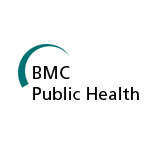
Background
Obstructed labour is still a major cause of maternal morbidity and mortality and of adverse outcome for newborns in low-income countries. The aim of this study was to investigate the role of individual and health facility factors and the risk for obstructed labour and its adverse outcomes in south-western Uganda.
Methods
A review was performed on 12,463 obstetric records for the year 2006 from six hospitals located in south-western Uganda and 11,180 women records were analysed. Multivariate logistic regression analyses were applied to control for probable confounders.
Results
Prevalence of obstructed labour for the six hospitals was 10.5% and the main causes were cephalopelvic disproportion (63.3%), malpresentation or malposition (36.4%) and hydrocephalus (0.3%). The risk of obstructed labour was statistically significantly associated with being resident of a particular district [Isingiro] (AOR 1.39, 95% CI: 1.04-1.86), with nulliparous status (AOR 1.47, 95% CI: 1.22-1.78), having delivered once before (AOR 1.57, 95% CI: 1.30-1.91) and age group 15-19 years (AOR 1.21, 95% CI: 1.02-1.45). The risk for perinatal death as an adverse outcome was statistically significantly associated with districts other than five comprising the study area (AOR 2.85, 95% CI: 1.60-5.08) and grand multiparous status (AOR 1.89, 95% CI: 1.11-3.22). Women who lacked paid employment were at increased risk of obstructed labour. Perinatal mortality rate was 142/1000 total births in women with obstructed labour compared to 65/1000 total births in women without the condition. The odds of having maternal complications in women with obstructed labour were 8 times those without the condition. The case fatality rate for obstructed labour was 1.2%.
Conclusions
Individual socio-demographic and health system factors are strongly associated with obstructed labour and its adverse outcome in south-western Uganda. Our study provides baseline information which may be used by policy makers and implementers to improve implementation of safe motherhood programmes.